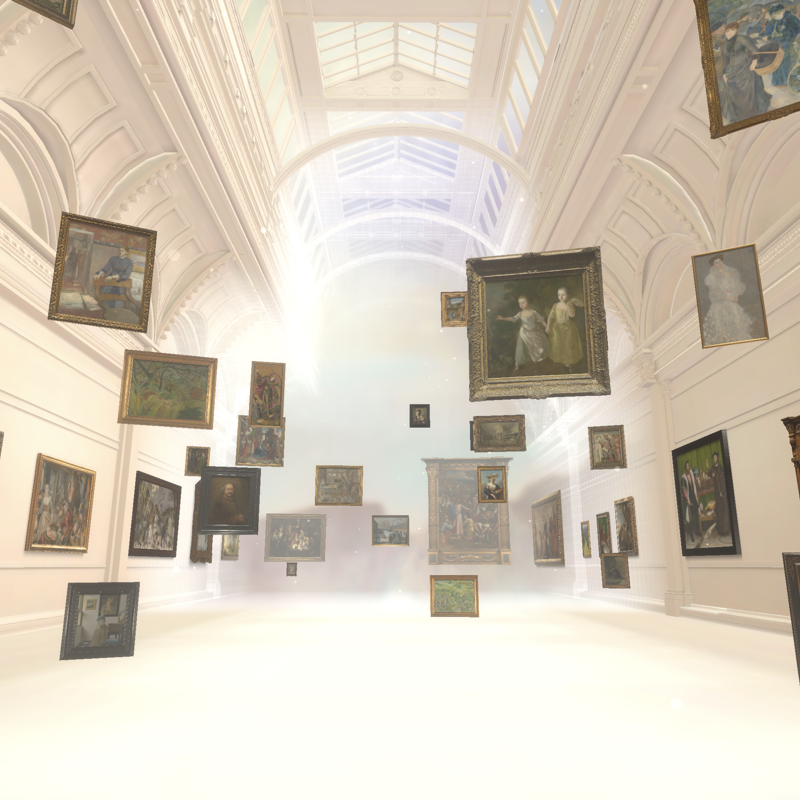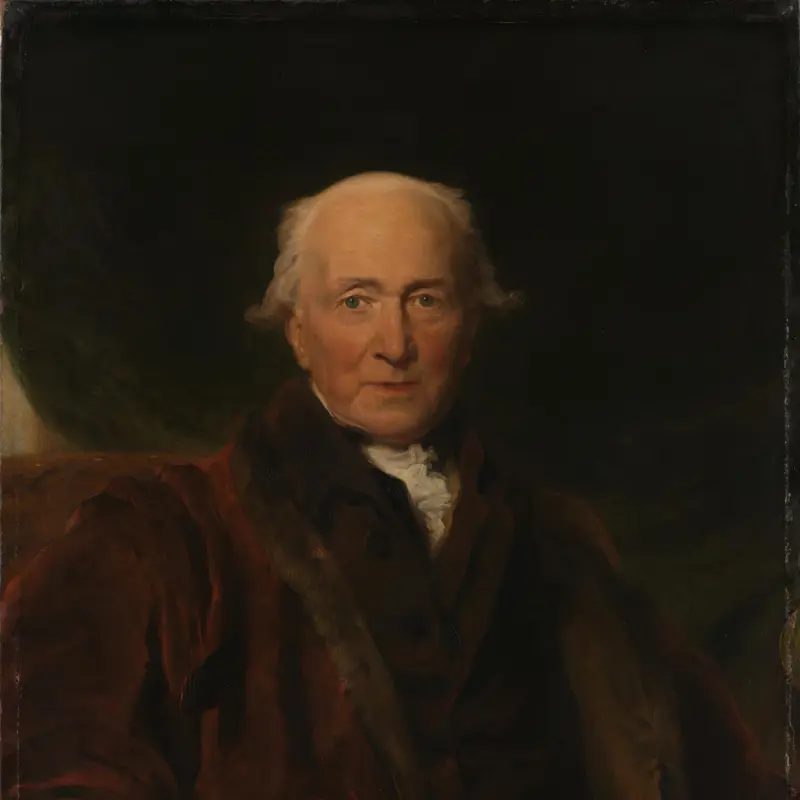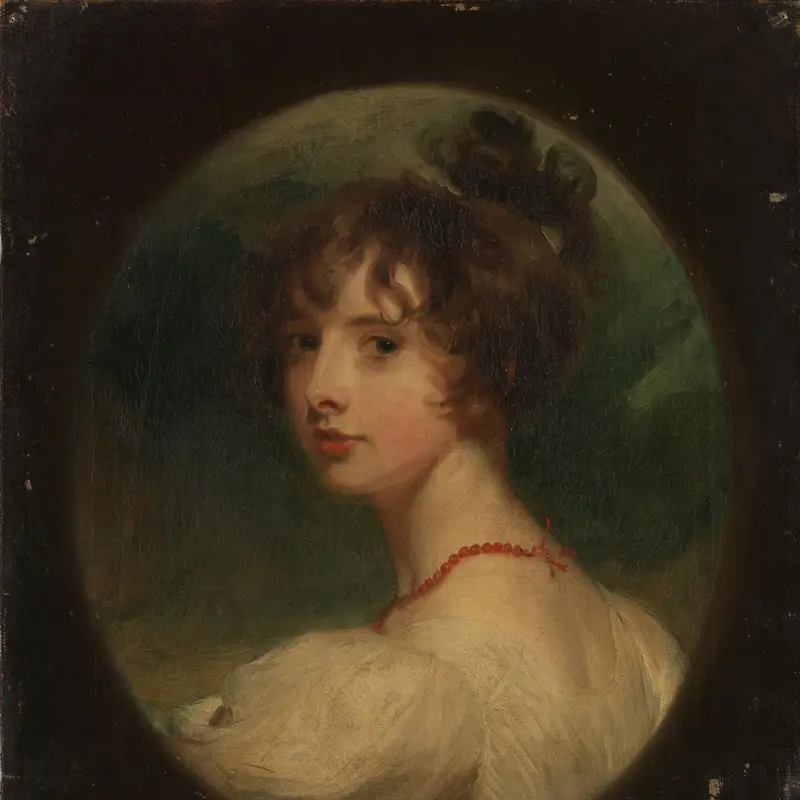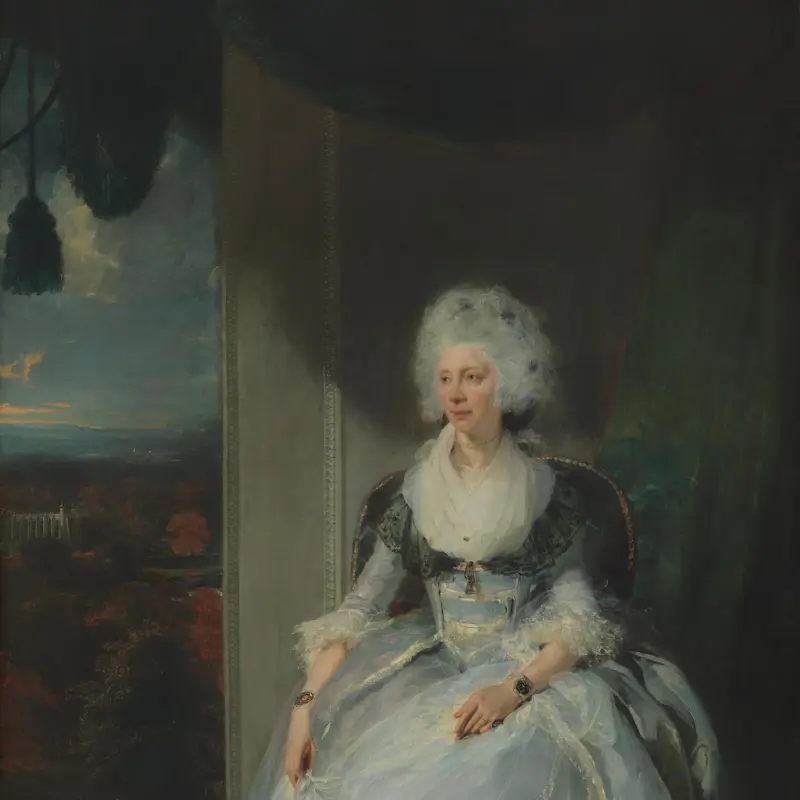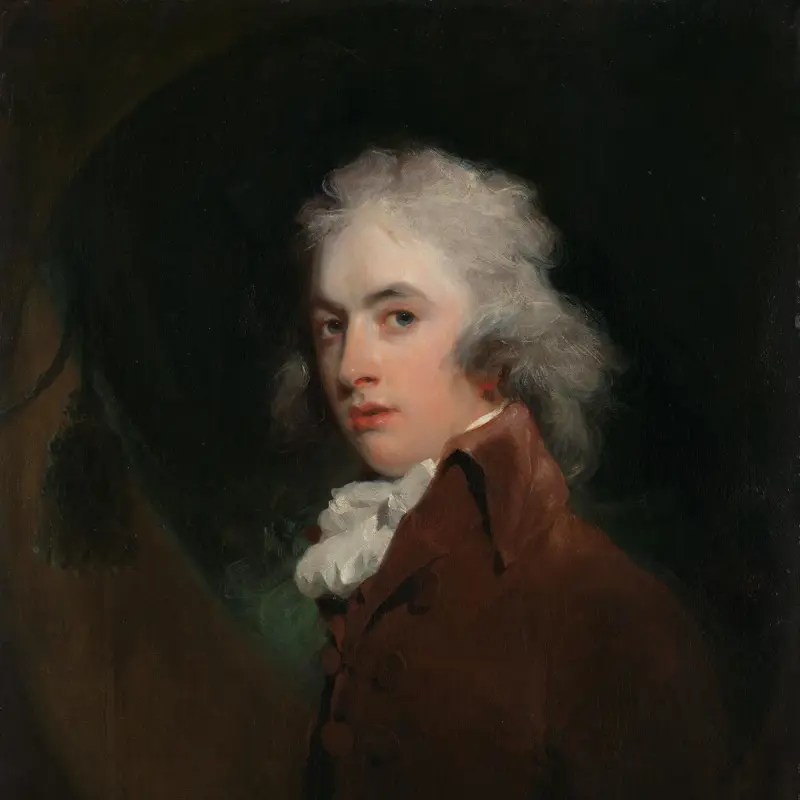Sir Thomas Lawrence, 'Charles William Lambton', 1825
About the work
Overview
This portrait of Charles William Lambton - aged six or seven - was commissioned by the boy’s father John George Lambton, 1st Earl of Durham, a Whig politician and MP for County Durham. Popularly known as The Red Boy, it remained in the Lambton family until it was acquired by the National Gallery in 2021. It is acknowledged as one of Thomas Lawrence’s masterpieces and, a sign of the image’s enduring popularity, it was the first painting to be reproduced on a British postage stamp in 1967.
Sitting on a promontory overlooking a moonlit sea, Lawrence portrays Lambton as a child wanderer, lost in contemplation of the sublime power of nature. The flowers opening next to him symbolise his young age. He is at the beginning of his journey through life, though this was cut short - he died of tuberculosis aged only thirteen. Lawrence may have been inspired by the work of Lord Byron or by William Wordsworth’s poem There was a Boy (1798).
Unlike Gainsborough’s famous portrait, The Blue Boy (1770, The Huntington Art Museum, San Marino) who wears a seventeenth-century ‘Van Dyck’ costume, The Red Boy is dressed in the contemporary children’s fashion of loose-fitting clothes. Several of Lawrence’s young sitters wear these red velvet ‘skeleton suits’ which were roomier and better for playing outdoors and which, by 1800, had replaced Van Dyck dress for children of wealthy families.
Key facts
Details
- Full title
- Portrait of Charles William Lambton (‘The Red Boy’)
- Artist
- Sir Thomas Lawrence
- Artist dates
- 1769 - 1830
- Date made
- 1825
- Medium and support
- Oil on canvas
- Dimensions
- 140.5 × 110.6 cm
- Acquisition credit
- Bought with the support of the American Friends of the National Gallery, the Estate of Miss Gillian Cleaver, Art Fund (with a contribution from the Wolfson Foundation), The Al Thani Collection Foundation, The Manny and Brigitta Davidson Charitable Foundation, Mr William Sharpe, and The Society of Dilettanti Charitable Trust, 2021
- Inventory number
- NG6692
- Location
- Central Hall
- Collection
- Main Collection
- Frame
- 19th-century English Frame (original frame)
Provenance
Additional information
Text extracted from the ‘Provenance’ section of the catalogue entry in ‘National Gallery Catalogues: Online Entries’, London 2024; for further information, see the full catalogue entry.
Exhibition history
-
2023Masterpieces from the National GalleryShanghai Art Museum East17 January 2023 - 7 May 2023National Museum of Korea2 June 2023 - 9 October 2023Hong Kong Palace Museum22 November 2023 - 11 April 2024Chimei Museum2 May 2024 - 1 September 2024
Bibliography
-
1831D.E. Williams, The Life and Correspondence of Sir Thomas Lawrence, 2 vols, London 1831
-
1900R.S. Gower, Sir Thomas Lawrence, with a Catalogue of the Artist's Exhibited and Approved Works Compiled by Algernon Graves, London 1900
-
1906
S.J. Reid, Life and Letters of the First Earl of Durham, 1792-1840, vol. 1, London 1906
-
1913W. Armstrong, Lawrence, London 1913
-
1930W.T. Whitley, Art in England 1821-1837, Cambridge 1930
-
1954K. Garlick, Sir Thomas Lawrence, London 1954
-
1979M. Levey, Sir Thomas Lawrence (exh. cat., National Portrait Gallery, London), London 1979
-
1989K. Garlick, Sir Thomas Lawrence: A Complete Catalogue of the Oil Paintings, Oxford 1989
-
2003P. Noon et al., Constable to Delacroix: British Art and the French Romantics (exh. cat., Tate Britain, 5 February - 11 March 2003; The Minneapolis Institute of Arts, 8 June - 7 September 2003; Metropolitan Museum of Art, 7 October - 4 January 2004), London 2003
-
2005M. Levey, Sir Thomas Lawrence, New Haven 2005
-
2010A.C. Albinson, P. Funnell and L. Peltz (eds.) Thomas Lawrence: Regency Power and Brilliance (exh. cat. National Portrait Gallery, London; Yale Center for British Art, New Haven), New Haven and London 2010
-
2022National Gallery, The National Gallery: Review of the Year, April 2021 - March 2022, London 2022
-
2024The National Gallery, National Gallery Catalogues: Online Entries for Individual Paintings, London 2024
Frame
Thomas Lawrence’s Portrait of Charles William Lambton arrived at the Gallery within its original nineteenth-century English frame, a style created by the artist in collaboration with the framemaker George Morant. The pinewood frame has an extremely wide ogee curve, adorned with a repeating pattern of flower heads surrounded by C-scrolls, leaves and flowers. This is interspersed with a stemmed leaf pattern showcasing flowers and husks on either side. The ornaments in the mitred corners echo the same style. An egg-and-dart motif is set along the back edge. The frame is edged with French acanthus leaves and includes a separate slip frame that reflects a neoclassical design, centred with flower heads and tulip shapes alternating with heart-shaped scrolls and palmettes, facing towards the corner leaf. This is all bordered with triple beads and a twisted-barley reel. The sight edge is plain. The matt oil gilding is well preserved, and the delicate ornaments are made from composition, pressed from a mould and set against a cross-hatched background.
This type of frame is known as a Morant frame, with his trade label attached to the reverse, although it is also referred to as a Lawrence frame or artist’s frame, designed by the artist and integrated with the artwork from its inception.
About this record
If you know more about this work or have spotted an error, please contact us. Please note that exhibition histories are listed from 2009 onwards. Bibliographies may not be complete; more comprehensive information is available in the National Gallery Library.

